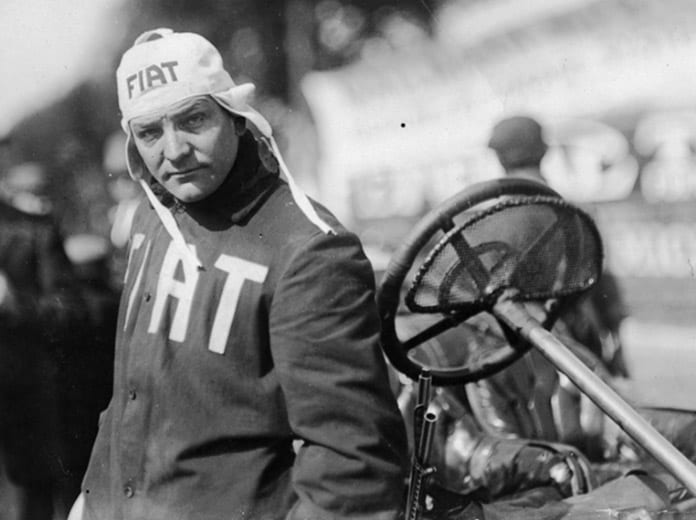At the turn of the 20th century, the press romanticized race car drivers as dashing “Knights of the Roaring Road.”
Ted Tetzlaff towered over that cast of idealized, larger-than-life characters not only for his exceptional on-track talent but also for his off-track escapades that generated gossipy newspaper articles.
There was a string of Hollywood starlets that accompanied him to the race track. Rumors ran rampant about his relationship with the notoriously promiscuous Mack Sennett film star, Mabel Normand. And just before the Santa Monica Road Race of 1915, where he was a favorite to win, a group of gamblers kidnapped him. They held him for ransom in a brothel and when police broke in to extricate him, Tetzlaff refused to leave.
Long before “bad-ass” described talented, resourceful and determined race car drivers, Tetzlaff was the baddest of the bad.
He deftly handled the treacherous, thunderous and monstrous machines of his day. Those cars, powered by enormous engines, the pistons the size of water buckets, and with Conestoga wagon centers of gravity, required an exceptional touch to keep them pointed in the right direction.
Tetzlaff had it.
The 1910 Santa Monica Road Race was contested over a twisting 8.5-mile course laid out on the city streets and winding roads surrounding the town. Driving a ponderous, 600-cubic-inch Lozier, Tetzlaff won the 200-mile race while averaging a jaw-dropping 70 mph.
The press nicknamed him “Terrible Ted,” a moniker that grated on Tetzlaff but aptly described his fearless, win-at-all-costs driving style.
Born Theodore Herbert Tetzlaff in Los Angeles in 1883, Tetzlaff’s first recorded racing experience was in the 1909 Santa Monica Road Race. It was an inauspicious beginning, as he dropped out early.
Although documented statistics from that era are sketchy, it’s obvious car owners viewed him as talented because he landed a ride in the first Indianapolis 500. He exited after only 20 laps because of an accident and later ran three more Indy 500s.
His racing fortunes, however, improved considerably in the following months, as he got the seat in one of the highly regarded Fiat factory cars. With Fiat, he won the Santa Monica Road Race in 1912, finished second at Indianapolis that same year and captured two other AAA Championship events.
In 1912, he joined forces with renowned hippodrome racing promoter Ernie Moross. It was a partnership that turned Tetzlaff into a household name. In addition to the limited number of legitimate AAA races, he competed in dozens of Moross’ promotions on the multitude of fairground tracks scattered across the country.
Though their outcomes were often contrived, those races were hugely popular. They drew grandstands full of awed spectators, who arrived in droves to see the thundering, smoke-billowing automobiles and their heroic drivers.
Another Moross promotion elevated Tetzlaff’s star-status even higher. Driving a modified Blitzen-Benz in 1914, Tetzlaff set a land-speed record at Utah’s famed Bonneville Salt Flats.
AAA clocks timed him at 142 mph. However, rumor had it that Moross influenced the timekeeper. True or not, the results were never declared official. Still, it was an incredible speed for 1914, generating headlines worldwide.
The hippodrome shows, dubious record runs and headline-grabbing promotions dovetailed perfectly into Tetzlaff’s next career move. Silent movie star and ardent race fan Wallace Reid befriended Tetzlaff, who became a consultant to the box office magnet.
With Reid’s influence, Tetzlaff also began performing stunts and making cameo appearances in films. After he retired from racing in 1916, he landed many prominent film roles with the majority produced by film pioneer Mack Sennett. One of those, “Speed Kings,” is available on YouTube.
When Tetzlaff’s son, Dale, wanted to follow his father into the film industry, Tetzlaff’s friend, Normand, suggested he get behind the camera, rather than in front of it. Dale Tetzlaff became an Academy Award-nominated cinematographer and director with more than 100 films to his credit.
Ted Tetzlaff died in 1929 at age 46.
While the passage of time has dimmed the memory of his racing accomplishments, we should remember “Terrible Ted” Tetzlaff as one whose exploits ingrained auto racing into the American consciousness.
